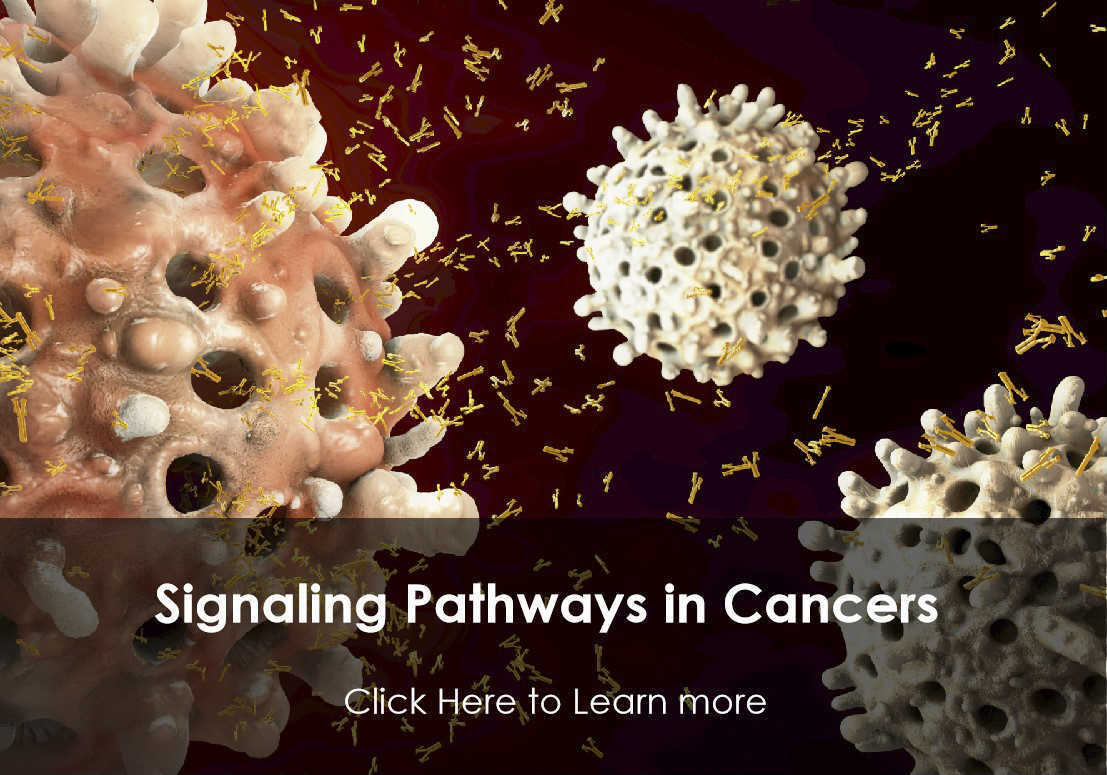SPRY4
This gene encodes a member of a family of cysteine- and proline-rich proteins. The encoded protein is an inhibitor of the receptor-transduced mitogen-activated protein kinase (MAPK) signaling pathway. Activity of this protein impairs the formation of active GTP-RAS. Nucleotide variation in this gene has been associated with hypogonadotropic hypogonadism 17 with or without anosmia. Alternative splicing results in a multiple transcript variants.
Full Name
Sprouty RTK Signaling Antagonist 4
Function
Suppresses the insulin receptor and EGFR-transduced MAPK signaling pathway, but does not inhibit MAPK activation by a constitutively active mutant Ras (PubMed:12027893).
Probably impairs the formation of GTP-Ras (PubMed:12027893).
Inhibits Ras-independent, but not Ras-dependent, activation of RAF1 (PubMed:12717443).
Represses integrin-mediated cell spreading via inhibition of TESK1-mediated phosphorylation of cofilin (PubMed:15584898).
Probably impairs the formation of GTP-Ras (PubMed:12027893).
Inhibits Ras-independent, but not Ras-dependent, activation of RAF1 (PubMed:12717443).
Represses integrin-mediated cell spreading via inhibition of TESK1-mediated phosphorylation of cofilin (PubMed:15584898).
Biological Process
Biological Process animal organ developmentManual Assertion Based On ExperimentIBA:GO_Central
Biological Process cellular response to leukemia inhibitory factorIEA:Ensembl
Biological Process negative regulation of ERK1 and ERK2 cascadeIEA:InterPro
Biological Process negative regulation of fibroblast growth factor receptor signaling pathwayManual Assertion Based On ExperimentIBA:GO_Central
Biological Process negative regulation of MAP kinase activityManual Assertion Based On ExperimentIBA:GO_Central
Biological Process negative regulation of Ras protein signal transductionManual Assertion Based On ExperimentIBA:GO_Central
Biological Process negative regulation of substrate adhesion-dependent cell spreadingManual Assertion Based On ExperimentIMP:UniProtKB
Biological Process cellular response to leukemia inhibitory factorIEA:Ensembl
Biological Process negative regulation of ERK1 and ERK2 cascadeIEA:InterPro
Biological Process negative regulation of fibroblast growth factor receptor signaling pathwayManual Assertion Based On ExperimentIBA:GO_Central
Biological Process negative regulation of MAP kinase activityManual Assertion Based On ExperimentIBA:GO_Central
Biological Process negative regulation of Ras protein signal transductionManual Assertion Based On ExperimentIBA:GO_Central
Biological Process negative regulation of substrate adhesion-dependent cell spreadingManual Assertion Based On ExperimentIMP:UniProtKB
Cellular Location
Cytoplasm
Cell projection, ruffle membrane
Found in the cytoplasm in unstimulated cells but is translocated to the membrane ruffles in cells stimulated with EGF (epidermal growth factor) (By similarity).
Colocalizes with TESK1 in vesicular spots in the cytoplasm (PubMed:15584898).
Cell projection, ruffle membrane
Found in the cytoplasm in unstimulated cells but is translocated to the membrane ruffles in cells stimulated with EGF (epidermal growth factor) (By similarity).
Colocalizes with TESK1 in vesicular spots in the cytoplasm (PubMed:15584898).
Involvement in disease
Hypogonadotropic hypogonadism 17 with or without anosmia (HH17):
A disorder characterized by absent or incomplete sexual maturation by the age of 18 years, in conjunction with low levels of circulating gonadotropins and testosterone and no other abnormalities of the hypothalamic-pituitary axis. In some cases, it is associated with non-reproductive phenotypes, such as anosmia, cleft palate, and sensorineural hearing loss. Anosmia or hyposmia is related to the absence or hypoplasia of the olfactory bulbs and tracts. Hypogonadism is due to deficiency in gonadotropin-releasing hormone and probably results from a failure of embryonic migration of gonadotropin-releasing hormone-synthesizing neurons. In the presence of anosmia, idiopathic hypogonadotropic hypogonadism is referred to as Kallmann syndrome, whereas in the presence of a normal sense of smell, it has been termed normosmic idiopathic hypogonadotropic hypogonadism (nIHH).
A disorder characterized by absent or incomplete sexual maturation by the age of 18 years, in conjunction with low levels of circulating gonadotropins and testosterone and no other abnormalities of the hypothalamic-pituitary axis. In some cases, it is associated with non-reproductive phenotypes, such as anosmia, cleft palate, and sensorineural hearing loss. Anosmia or hyposmia is related to the absence or hypoplasia of the olfactory bulbs and tracts. Hypogonadism is due to deficiency in gonadotropin-releasing hormone and probably results from a failure of embryonic migration of gonadotropin-releasing hormone-synthesizing neurons. In the presence of anosmia, idiopathic hypogonadotropic hypogonadism is referred to as Kallmann syndrome, whereas in the presence of a normal sense of smell, it has been termed normosmic idiopathic hypogonadotropic hypogonadism (nIHH).
View more
Anti-SPRY4 antibodies
+ Filters
 Loading...
Loading...
Target: SPRY4
Host: Rabbit
Antibody Isotype: IgG
Specificity: Mouse, Rat, Human
Clone: CBXS-1307
Application*: WB, IP, F, IF
More Infomation
Hot products 
-
Rabbit Anti-BRCA2 Recombinant Antibody (D9S6V) (CBMAB-CP0017-LY)

-
Mouse Anti-ADGRE2 Recombinant Antibody (V2-261270) (CBMAB-C0813-LY)

-
Rat Anti-CD63 Recombinant Antibody (7G4.2E8) (CBMAB-C8725-LY)

-
Mouse Anti-DMPK Recombinant Antibody (CBYCD-324) (CBMAB-D1200-YC)

-
Mouse Anti-ACTN4 Recombinant Antibody (V2-6075) (CBMAB-0020CQ)

-
Mouse Anti-ADRB2 Recombinant Antibody (V2-180026) (CBMAB-A1420-YC)

-
Mouse Anti-ANXA7 Recombinant Antibody (A-1) (CBMAB-A2941-YC)

-
Rabbit Anti-Acetyl-Histone H3 (Lys36) Recombinant Antibody (V2-623395) (CBMAB-CP0994-LY)

-
Mouse Anti-CD19 Recombinant Antibody (CBXC-1224) (CBMAB-C1491-CQ)

-
Mouse Anti-ARHGDIA Recombinant Antibody (CBCNA-009) (CBMAB-R0415-CN)

-
Mouse Anti-ESR1 Recombinant Antibody (Y31) (CBMAB-1208-YC)

-
Rat Anti-4-1BB Recombinant Antibody (V2-1558) (CBMAB-0953-LY)

-
Mouse Anti-ATP5F1A Recombinant Antibody (51) (CBMAB-A4043-YC)

-
Mouse Anti-ADGRE5 Recombinant Antibody (V2-360335) (CBMAB-C2088-CQ)

-
Mouse Anti-ARG1 Recombinant Antibody (CBYCL-103) (CBMAB-L0004-YC)

-
Rat Anti-EPO Recombinant Antibody (16) (CBMAB-E1578-FY)

-
Mouse Anti-ADGRL2 Recombinant Antibody (V2-58519) (CBMAB-L0166-YJ)

-
Rat Anti-ABCC11 Recombinant Antibody (V2-179001) (CBMAB-A0236-YC)

-
Human Anti-SARS-CoV-2 S1 Monoclonal Antibody (CBFYR-0120) (CBMAB-R0120-FY)

-
Mouse Anti-BLK Recombinant Antibody (CBYY-0618) (CBMAB-0621-YY)

For Research Use Only. Not For Clinical Use.
(P): Predicted
* Abbreviations
- AActivation
- AGAgonist
- APApoptosis
- BBlocking
- BABioassay
- BIBioimaging
- CImmunohistochemistry-Frozen Sections
- CIChromatin Immunoprecipitation
- CTCytotoxicity
- CSCostimulation
- DDepletion
- DBDot Blot
- EELISA
- ECELISA(Cap)
- EDELISA(Det)
- ESELISpot
- EMElectron Microscopy
- FFlow Cytometry
- FNFunction Assay
- GSGel Supershift
- IInhibition
- IAEnzyme Immunoassay
- ICImmunocytochemistry
- IDImmunodiffusion
- IEImmunoelectrophoresis
- IFImmunofluorescence
- IGImmunochromatography
- IHImmunohistochemistry
- IMImmunomicroscopy
- IOImmunoassay
- IPImmunoprecipitation
- ISIntracellular Staining for Flow Cytometry
- LALuminex Assay
- LFLateral Flow Immunoassay
- MMicroarray
- MCMass Cytometry/CyTOF
- MDMeDIP
- MSElectrophoretic Mobility Shift Assay
- NNeutralization
- PImmunohistologyp-Paraffin Sections
- PAPeptide Array
- PEPeptide ELISA
- PLProximity Ligation Assay
- RRadioimmunoassay
- SStimulation
- SESandwich ELISA
- SHIn situ hybridization
- TCTissue Culture
- WBWestern Blot

Online Inquiry







